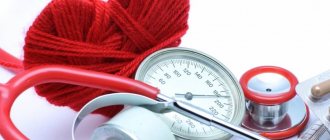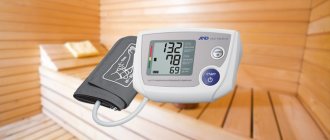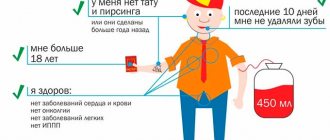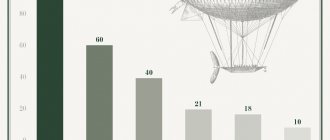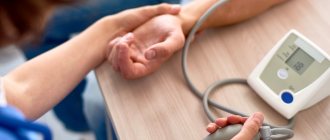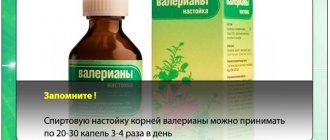A survey of the adult population of Russia showed that more than 40% of patients have stable hypertension - a condition in which blood pressure levels are higher than the physiological and age norm. Doctors diagnose this disease when a person has blood pressure above 140/90 mmHg for a long time. Art. One-time surges in blood pressure can occur in almost every person; only constantly elevated blood pressure indicates pathology of the circulatory system. No less harmful to the body is the opposite phenomenon - hypotension, when the pressure drops to 95/65 mm Hg. and below.
Causes
Blood pressure is the pressure of blood on arterial walls.
It is measured at two points: the upper one indicates the level of pressure during heart contraction, and the lower one indicates the same level at maximum cardiac relaxation. The problem of high blood pressure is called hypertension in medicine. In most cases, this pathology is not associated with other diseases. It occurs as a result of an imbalance of water and salt in the body, as well as changes in the functioning of the cardiovascular system. In rare cases, the development of hypertension is provoked by diseases of the kidneys or endocrine system.
Hypotension (low blood pressure) is caused by somatoform dysfunction. In connection with this pathology, there is a disruption in the functioning of the autonomic nervous system, which is responsible for vascular tone, as well as for the functioning of other systems.
Non-drug and drug treatment of hypertension
If high blood pressure is detected, additional examination is required to help the doctor choose the optimal treatment for each patient. The main thing is to understand that most often arterial hypertension is a condition associated with irreversible changes in the body, and this requires constant therapeutic interventions. Only this approach will help reduce the risk of complications that come with high blood pressure.
There are two treatment options: non-drug and drug. For some young patients with a slight increase in blood pressure and without additional risk factors, the doctor may recommend non-drug interventions: proper nutrition, normalization of body weight, regular physical activity of at least 30 minutes a day, complete cessation of cigarettes, limiting alcohol consumption. Sometimes this is enough to normalize blood pressure and reduce the risk of cardiovascular accidents.
In most cases, treatment of hypertension requires regular medication in addition to non-drug interventions. Currently, doctors have 5-6 groups of medications in their arsenal, the regular use of which allows not only to normalize blood pressure levels, but even to prolong the life of patients. For many patients, drug treatment for hypertension should begin with taking two drugs from different groups simultaneously. In any case, treatment should always be prescribed and supervised by a doctor, and self-administration of medications can bring harm rather than benefit.
Features of the treatment of arterial hypertension
- - Taking medications should be constant (yes, lifelong, and it should become part of daily routine, like washing your face and brushing your teeth!). There are no “courses of treatment”.
- — When blood pressure levels are normalized due to medications, they cannot be stopped, but must be continued (the blood pressure is normal, which means the medications are working well and should continue to work). Even a short-term refusal of medications can lead to irreversible consequences.
- — Blood pressure does not need to be measured too often. Once a day is enough (unless your doctor recommends otherwise).
- — If the prescribed treatment is not effective enough and the blood pressure remains elevated, you need to inform your doctor so that he can add an additional drug or increase the dose of the previous medications.
- — Treatment of hypertension is a long and painstaking collaboration between the doctor and the patient, in which they must help each other in order to together overcome the disease and prevent its dangerous complications.
Symptoms
Symptoms for high and low blood pressure are different. Hypotension is felt by the patient when the pressure drops to 90/60 mmHg, and hypertension - from 140/90 mmHg.
Exactly how the described pathologies manifest themselves is outlined in the table below.
| Hypertension | Hypotension |
| Headache (pressure in the temples and forehead, as well as in the eye area) | A throbbing or dull headache that occurs as a result of mental or physical stress. |
| Weak heartbeat | Rapid heartbeat and pain in this area. |
| Tinnitus and blurred vision | Nausea or constipation. Patients also experience bloating. |
| Facial redness | Drowsiness, fatigue and irritability. |
You may notice that the symptoms of hypertension are not as pronounced as with hypotension. Often, an increase in pressure is noted accidentally when it is measured.
Hypotension
Low blood pressure is classified into two types - acute and chronic. They are described in more detail in the table below.
| Acute arterial hypotension | Chronic arterial hypotension |
| Single form | Classified into three types:
|
| It develops against the background of other pathologies: myocardial infarction, an attack of arrhythmia, a blood clot in the pulmonary artery, an acute form of peritonitis and severe bleeding. | The primary type occurs during intense physical exertion or due to constant fatigue and overexertion. The secondary type of hypotension is a symptom of other, more serious diseases. The physiological type is often found among people engaged in constant physical labor, since the body has adapted to the economical waste of oxygen. |
Hypertension
The classification of the pathology of high blood pressure is more extensive. The main thing is to divide all types of hypertension into two groups - primary hypertension and secondary hypertension. The first type of disease develops without the influence of others, and the second is a symptom of another disease. Hypertension is classified according to the following factors:
- nature of the disease: benign and malignant;
- clinical forms: brain, kidney and heart;
- stages: first degree (increased pressure without organ damage), second (increased pressure with organ damage) and third (severe form of hypertension with detected kidney or cardiovascular diseases).
The most common is the primary form of the disease; its occurrence is influenced by many factors. When a patient is diagnosed with a secondary form of pathology, it is clear that the root cause is a disruption in the normal functioning of one of the organs.
When and how should blood pressure be measured?
Every healthy person, starting from the age of 18, needs at least one blood pressure measurement during a routine medical examination. If the blood pressure numbers are normal and the doctor finds no other risk factors for cardiovascular disease, the measurement can be repeated after 5 years. If your doctor has recommended home blood pressure monitoring, then an automatic blood pressure monitor that starts at the touch of a button is suitable for this. Before using it, you must read the instructions so that the results of the change are not distorted.
Rules for measuring pressure
- 1. The measurement should be taken after 5 minutes of rest, and for smokers - 30 minutes after the last cigarette.
- 2. During the measurement, take a comfortable position, leaning on the back of a chair, placing both legs on the floor, without straining or crossing them.
- 3. Place the blood pressure cuff correctly and ensure that it is approximately at heart level.
- 4. During the measurement, do not move or talk.
- 5. The measurement can be taken twice, or even three times, and take the arithmetic average of these measurements as an indicator of blood pressure.
Treatment
Tired of constant headaches and discomfort with rapid heartbeat? Are you suffering from irritability and drowsiness? Tired of suffering from bloating and nausea? Is the range of medications available in pharmacies so wide that you don’t know which one to choose? What parameters should be used to select a medicine that will be most effective? Pay attention to the presented list of drugs for normalizing blood pressure, when choosing which you will not even remember the disturbing symptoms.
In modern pharmaceuticals, there is a huge selection of medications that are aimed at solving problems with blood pressure. In order to avoid side effects of drugs and get a quick effect, you should consult your doctor before taking pills. Obviously, different types of medications are used for hypertension and hypotension, so it makes sense to describe them separately.
Free treatment of hypertension under the compulsory medical insurance policy
| Planned treatment of hypertension in Moscow city hospitals is available free of charge under the compulsory medical insurance policy for all citizens of the Russian Federation, regardless of place of residence. Find out more by calling the “Moscow – Capital of Health” project hotline: +7 or leaving a request on the MSZ.rf website. | SUBMIT YOUR APPLICATION |
The material was prepared jointly with the expert:
Alexey Dmitrievich Erlikh, cardiologist, MD, head of the department of cardiac resuscitation of the N.E. Bauman City Clinical Hospital, holder of the title “Moscow Doctor”.
Source:
information project “Moscow is the capital of health”
Hypertension
Below is a table describing all existing groups of medications needed for this pathology.
| Group | Action | Examples |
| Angiotensin converting enzyme inhibitor | These agents inhibit the transition of this enzyme of the 1st type to the 2nd, as a result of which the vessels dilate and the pressure decreases |
|
| Receptor blockers | By blocking angiotensin receptors, the angiotensin type 2 enzyme does not interact with them, and a decrease in pressure also occurs due to vasodilation. |
|
| Calcium channel blockers | The drugs block the channels through which calcium enters the cell, as a result of which a certain type of protein is not formed and the blood vessels dilate, the pulse and blood pressure become lower. |
|
| Diuretics | Diuretics help remove water from the body, which lowers blood pressure. |
|
| Alpha blockers | The drugs are aimed at blocking alpha adrenergic receptors, which leads to the irritating effect of norepinephrine and a decrease in blood pressure. | Doxazosin |
| Beta blockers | Drugs in this group block beta receptors and stop the production of renin, which constricts blood vessels and blood pressure. |
|
Only a highly specialized specialist should determine which group of drugs and in what dosage you need after a thorough diagnosis.
Means regulating blood pressure levels
Home Medical encyclopedia Medicines Cardiovascular medicines
See also amiloride, brinaldix, veroshpiron, hypothiazide, dalargin, diltiazem, oxodoline, triamterene, furosemide, cyclomethiazide, etc.
Beta blockers
ATENOLOL (Atenolol)
Synonyms: Apo-Atenol, Atenobene, Atcardil, Betacard, Dignobeta, Catenol, Tenolol, Tenormin, Falitonzin, Ormidol, Atenol, Blockium, Catenolol, Hypoten, Myocord, Normiten, Prenormin, Telvodin, Tenoblock, Tensicor, Velorin, Vericordin, Atenil, Atenova, Atenosan, Blockotenol, Vazcoten, NovoAtenol, Pantanol, Complementary feeding, Sinarom, Unilok, etc.
Pharmachologic effect. Atenolol is a selective (cardioselective) beta-blocker.
Differs in duration of action. The half-life (the time during which ½ dose of the drug is eliminated) is 6-9 hours.
Indications for use. Hypertension (persistent rise in blood pressure)..
It can be prescribed to patients with a tendency to bronchospasm (narrowing of the lumen of the bronchi) and peripheral vasospasm with less risk than non-selective beta-blockers.
Method of administration and dose. Prescribed orally in a single dose of 0.05-0.1 g (50-100 mg = 1/2-1 tablet). Take for a long time.
Side effects and contraindications.
Release form. Tablets of 0.1 g, film-coated.
Storage conditions. List B. In a place protected from light.
ATehexal compositum
Pharmachologic effect. Combined antihypertensive drug. Atenolol, which is part of it, is a cardioselective beta-adrenergic blocker (selectively blocking beta-adrenergic receptors of the heart), reduces the heart rate, reduces stroke and cardiac output, and reduces the activity of renin (an enzyme involved in the regulation of blood pressure) in the blood plasma. Oxodoline is a diuretic (diuretic) and natriuretic (removes sodium ions in the urine) long-acting agent, inhibits the reabsorption (reabsorption) of sodium mainly in the distal
nal (located on the periphery of the kidney) renal tubules.
Indications for use. Arterial hypertension (persistent rise in blood pressure) in the absence of sufficient effect from the separate use of each of the active substances included in the drug.
Method of administration and dose. The dose of the drug is determined individually. The drug is taken once a day before breakfast, without chewing. Take with sufficient amount of liquid. The daily dose is 1 tablet containing 100 mg of atenolol and 25 mg of oxodoline, or 50 mg of atenolol and 12.5 mg of oxodoline.
During treatment, periodic monitoring of liver function indicators is necessary, as well as the electrolyte (ionic) composition of the blood (especially potassium levels), the concentration of glucose, uric acid, lipids (fats), and creatinine in the blood plasma.
When taking insulin or oral antidiabetic agents concomitantly, blood glucose levels should be monitored regularly.
If after prolonged treatment there is a need to discontinue the drug, this should be done as slowly as possible, since sudden withdrawal can lead to a decrease in blood supply to the myocardium (heart muscle) and a rapid increase in blood pressure.
Side effect. Arterial hypotension (low blood pressure), bradycardia (rare pulse), fainting, atrioventricular conduction disturbances (conduction of excitation through the conduction system of the heart), heart failure. In rare cases, Raynaud's syndrome (narrowing of the lumen of the vessels of the extremities). Hypokalemia, hyponatremia, hypomagnesemia, hypochloremia (decreased levels of potassium, sodium, magnesium, chlorine ions in the blood), rarely - hyperkalemia (increased potassium levels in the blood). Feeling tired, dizzy, feeling stunned, headache, nightmares, hallucinations (delusions, visions that take on the character of reality), depression (state of depression). Nausea, vomiting, constipation or diarrhea. Bronchospasm (sharp narrowing of the lumen of the bronchi) in predisposed patients. Rarely - anemia (decrease in hemoglobin content in the blood), leukopenia (decrease in the level of leukocytes in the blood), thrombocytopenia (decrease in the number of platelets in the blood), skin
rash. In some cases, acute nephritis (inflammation of the kidney), vasculitis (inflammation of the walls of blood vessels), liver dysfunction.
Contraindications. Heart failure; acute myocardial infarction; disturbances of atrioventricular and/or sinoatrial conduction (conduction of excitation through the conduction system of the heart); sick sinus syndrome (heart disease accompanied by rhythm disturbances); bradycardia (with a resting heart rate less than 50 beats/min); predisposition to bronchospasm; severe peripheral circulatory disorders; severe renal dysfunction (creatinine clearance / rate of purification of blood plasma from the final product of nitrogen metabolism - creatinine / less than 50 ml/min); glomerulonephritis (kidney disease); severe liver dysfunction, accompanied by disturbances of consciousness; hypokalemia; acidosis (blood acidification); gout; simultaneous use of MAO inhibitors; pregnancy; lactation; hypersensitivity to atenolol and other beta-blockers, oxodoline and other thiazide and loop diuretics.
In some cases, the drug may impair the patient’s ability to drive a car or use other machinery. This effect is enhanced by alcohol.
Release form. Tablets in packs of 30, 50 and 100 pieces. 1 tablet contains 50 mg of atenolol and 12.5 mg of oxodoline or 100 mg of atenolol and 25 mg of oxodoline.
Storage conditions. List B.
Atehexal compositum
Pharmachologic effect. Combined antihypertensive drug. Atenolol, which is part of it, is a cardioselective beta-adrenergic blocker (selectively blocking beta-adrenergic receptors of the heart), reduces the heart rate, reduces stroke and cardiac output, and reduces the activity of renin (an enzyme involved in the regulation of blood pressure) in the blood plasma. Oxodoline is a diuretic (diuretic) and natriuretic (removes sodium ions in the urine) long-acting agent, inhibits the reabsorption (reabsorption) of sodium mainly in the distal
nal (located on the periphery of the kidney) renal tubules.
Indications for use. Arterial hypertension (persistent rise in blood pressure) in the absence of sufficient effect from the separate use of each of the active substances included in the drug.
Method of administration and dose. The dose of the drug is determined individually. The drug is taken once a day before breakfast, without chewing. Take with sufficient amount of liquid. The daily dose is 1 tablet containing 100 mg of atenolol and 25 mg of oxodoline, or 50 mg of atenolol and 12.5 mg of oxodoline.
During treatment, periodic monitoring of liver function indicators is necessary, as well as the electrolyte (ionic) composition of the blood (especially potassium levels), the concentration of glucose, uric acid, lipids (fats), and creatinine in the blood plasma.
When taking insulin or oral antidiabetic agents concomitantly, blood glucose levels should be monitored regularly.
If after prolonged treatment there is a need to discontinue the drug, this should be done as slowly as possible, since sudden withdrawal can lead to a decrease in blood supply to the myocardium (heart muscle) and a rapid increase in blood pressure.
Side effect. Arterial hypotension (low blood pressure), bradycardia (rare pulse), fainting, atrioventricular conduction disturbances (conduction of excitation through the conduction system of the heart), heart failure. In rare cases, Raynaud's syndrome (narrowing of the lumen of the vessels of the extremities). Hypokalemia, hyponatremia, hypomagnesemia, hypochloremia (decreased levels of potassium, sodium, magnesium, chlorine ions in the blood), rarely - hyperkalemia (increased potassium levels in the blood). Feeling tired, dizzy, feeling stunned, headache, nightmares, hallucinations (delusions, visions that take on the character of reality), depression (state of depression). Nausea, vomiting, constipation or diarrhea. Bronchospasm (sharp narrowing of the lumen of the bronchi) in predisposed patients. Rarely - anemia (decrease in hemoglobin content in the blood), leukopenia (decrease in the level of leukocytes in the blood), thrombocytopenia (decrease in the number of platelets in the blood), skin
rash. In some cases, acute nephritis (inflammation of the kidney), vasculitis (inflammation of the walls of blood vessels), liver dysfunction.
Contraindications. Heart failure; acute myocardial infarction; disturbances of atrioventricular and/or sinoatrial conduction (conduction of excitation through the conduction system of the heart); sick sinus syndrome (heart disease accompanied by rhythm disturbances); bradycardia (with a resting heart rate less than 50 beats/min); predisposition to bronchospasm; severe peripheral circulatory disorders; severe renal dysfunction (creatinine clearance / rate of purification of blood plasma from the final product of nitrogen metabolism - creatinine / less than 50 ml/min); glomerulonephritis (kidney disease); severe liver dysfunction, accompanied by disturbances of consciousness; hypokalemia; acidosis (blood acidification); gout; simultaneous use of MAO inhibitors; pregnancy; lactation; hypersensitivity to atenolol and other beta-blockers, oxodoline and other thiazide and loop diuretics.
In some cases, the drug may impair the patient’s ability to drive a car or use other machinery. This effect is enhanced by alcohol.
Release form. Tablets in packs of 30, 50 and 100 pieces. 1 tablet contains 50 mg of atenolol and 12.5 mg of oxodoline or 100 mg of atenolol and 25 mg of oxodoline.
Storage conditions. List B.
Calbeta
Pharmachologic effect. A combination drug that includes the selective beta-blocker atenolol and the calcium channel blocker nifedipine. It has a pronounced hypotensive (lowering blood pressure) effect. It also has antianginal (anti-ischemic) and antiarrhythmic activity. With long-term course use, it causes regression of hypertrophy (reduction of hypertrophy /sharp increase in size/) of the left ventricle of the heart, which developed as a result of a prolonged rise in blood pressure.
Indications for use. Arterial hypertension (persistent rise in blood pressure), angina pectoris, especially when combined with hypertension (rise in blood pressure) or extrasystole (heart rhythm disturbance).
Method of administration and dose. Prescribe 1 capsule 1 or 2 times a day.
Treatment with the drug should be carried out under the control of water-electrolyte (water-ion) balance.
Side effect. Fatigue, headache, flushing (redness) of the face, feeling hot (these side effects are usually noted at the beginning of treatment and disappear on their own after 1-2 weeks of course use). The development of hyponatremia, hypokalemia and hypochloremia (decreased levels of sodium, potassium and chlorine in the blood), alkalosis (alkalinization) is possible. Rarely - dyspepsia (digestive disorders). There may be a conduction disorder (conduction of excitation through the heart muscle).
Contraindications. Sinus bradycardia (rare rhythmic pulse), myocardial conduction disturbances, severe heart failure, hypersensitivity to the components of the drug.
Release form. Capsules containing 0.05 g of atenolol and 0.02 g of nifedipine, in a package of 10 pieces.
Storage conditions. List B. In a place protected from light.
LABETALOL
Synonyms: Abetol, Albetol, Amipress, Ipolab, Labetol, Labrokol, Lamitol. Operkol, Presolol, Trandat, Trandol, etc.
Pharmachologic effect. Refers to “hybrid” adrenergic blockers, blocking both beta and alpha adrenergic receptors.
The combination of beta-blocking and peripheral vasodilator (vasodilator) effects provides a reliable antihypertensive (blood pressure-lowering) effect. The drug does not significantly affect cardiac output and heart rate.
Indications for use. Labetalol is used to lower blood pressure in cases of hypertension (high blood pressure) of varying degrees. Unlike conventional beta-blockers, it has a rapid antihypertensive effect.
Method of administration and dose. Orally prescribed in the form of tablets (during meals) 0.1 g (100 mg) 2-3 times a day. In severe forms of hypertension, the dose is increased. The average daily dose is 600-1000 mg in 2-4 doses. For maintenance therapy, take 1 tablet (100 mg) 2 times a day.
For hypertensive crises (rapid and sharp rise in blood pressure), labetalol is administered intravenously slowly at a dose of 20 mg (2 ml of 1% solution). If necessary, repeat injections at intervals of 10 minutes. It is preferable to administer labetalol by infusion. To do this, dilute the 1% injection solution in ampoules with isotonic sodium chloride or glucose solution to a concentration of 1 mg/ml. Administer at a rate of 2 ml (2 mg) per minute. Typically the required dose is 50-200 mg.
Intravenous administration is carried out in a hospital setting with the patient lying down (due to a rapid and significant decrease in blood pressure).
Side effect. When using labetalol, dizziness, headache, nausea, constipation or diarrhea, feeling tired, and itchy skin may occur.
Contraindications. Labetalol is contraindicated in patients with severe heart failure, atrioventricular block (impaired conduction of excitation through the heart).
The drug usually does not cause bronchospasm (sharp narrowing of the lumen of the bronchi), however, caution should be exercised in patients with bronchial asthma.
Release form. Tablets of 0.1 and 0.2 g (100 and 200 mg) of 30 and 100 pieces per package; 1% solution for injection in ampoules of 5 ml (50 mg per ampoule).
Storage conditions. List B. In a place protected from light.
METIPRANOLOL (Metipranolol)
Synonyms: Trimepranol.
Pharmachologic effect. Non-selective (non-selective) beta blocker. In its action it resembles propranolol. Its beta-blocking effect is more active than propranolol. In terms of negative inotropic effect (decrease in the force of heart contractions) it is significantly weaker than propranolol. The onset of hypotensive (lowering blood pressure) action is 1-2 hours after taking the drug orally. The negative chronotropic effect (decreased heart rate) of metypranolol lasts 10 hours.
Indications for use. Hypertension (persistent rise in blood pressure).
Method of administration and dose. As an antihypertensive (blood pressure-lowering) drug, 10 mg is prescribed 2-3 times a day. After a weekly interval, the dose can be increased. The maximum daily dose is usually 80 mg.
Side effects and contraindications. See Propranolol.
Release form. Tablets of 10 and 40 mg.
Storage conditions. List B. In a place protected from light.
METOPROLOL
Synonyms: Betaloc, Bloxan, Specicor, Protein, Lopresor, Neoblock, Opresol, Selopral, Vasocardin, Corvitol, Methohexal, Metolol, etc.
Pharmachologic effect. It is a selective (cardioselective) beta-adrenergic blocker (selectively blocking beta-adrenergic receptors of the heart).
Indications for use. Used for hypertension (persistent increase in blood pressure).
Method of administration and dose. Used orally and intravenously. Orally prescribed at a dose of 100-200 mg per day - 2-3 doses. If necessary, increase the dose. Maximum daily dose: 400 mg. Extended-release (long-acting) tablets are prescribed 1 tablet 1 time per day. In the morning after eating.
When using a daily dose of more than 200 mg, the cardioselective effect of the drug decreases, i.e. it blocks beta and beta2 adrenergic receptors.
If necessary, the daily dose can be administered in 1 dose in the morning. The drug is taken before or during meals with water.
In case of insufficient effectiveness, other antihypertensive (blood pressure-lowering) drugs are additionally prescribed.
Side effects and contraindications are the same as for atenolol. Intravenous metoprolol should not be administered if the systolic (“upper”) blood pressure is less than 110 mmHg. Art. In patients with bronchospastic phenomena (narrowing of the bronchial lumen), simultaneous administration of beta-adrenergic stimulating drugs is recommended.
Release form. Tablets of 50 and 100 mg in a package of 30; 100 and 200 pieces; retard tablets 200 mg in a package of 14 pieces; 1% solution in ampoules of 5 ml in a package of 10 pieces.
Storage conditions. List B. At a temperature not higher than +25 “C.
NADOLOL
Synonyms: Korgard, Anabet, Betadol, Nadik, Solgol.
Pharmachologic effect. Beta-blocker of non-selective action (blocks beta and beta2-adrenergic receptors). Does not have a negative inotropic effect (does not reduce the strength of heart contractions). It has a long duration of action.
Indications for use. Hypertension (persistent rise in blood pressure) in various stages.
Method of administration and dose. Prescribed orally (in tablet form) regardless of food intake. Due to the long-lasting effect, it can be used 1 time (sometimes 2 times) per day. The dose is adjusted depending on the effect. For hypertension (increased blood pressure), 40-80 mg is prescribed once a day, gradually (at weekly intervals) the dose is increased to 160 mg per day, rarely to 240 mg (in 1-2 doses) per day. Can
simultaneously use diuretics (diuretics) or vasodilators (dilators that dilate blood vessels).
Side effect. When using nadolol, in some cases, symptoms of fatigue, insomnia, paresthesia (a feeling of numbness in the limbs), dry mouth, bradycardia (rare pulse), and gastrointestinal disorders are possible.
Contraindications. The drug is contraindicated in bronchial asthma and a tendency to bronchospasm (narrowing of the lumen of the bronchi), sinus bradycardia (rare pulse) and heart block (impaired conduction of excitation through the conduction system of the heart) II-III degree, cardiogenic shock, pulmonary hypertension (increased pressure in the vessels of the lungs ), “congestive” heart disease. The drug should not be prescribed to women during pregnancy and breastfeeding. Caution is needed in case of renal and liver failure, diabetes mellitus.
Release form. Tablets 20; 40; 80; 120 and 160 mg (0.02; 0.04; 0.08; 0.12 and 0.16 g) in bottles of 100 and 1000 pieces.
Storage conditions. List B. At room temperature, in a place protected from light.
CORZID
Pharmachologic effect. A combination drug containing nadolol and the diuretic bendroflumethiazide.
Indications for use. Used to treat arterial hypertension (high blood pressure).
Method of administration and dose. Prescribe 1-2 tablets depending on the patient’s condition. In the future, the dosage regimen is determined according to the instructions of the attending physician.
Side effects and contraindications are the same as for nadolol.
Release form. Combination tablets containing 40 mg nadolol and 5 mg bendroflumethiazide and tablets containing 80 mg nadolol and 5 mg bendroflumethiazide.
Storage conditions. List B. In a dry place, protected from light.
PENBUTOLOL (Penbutolol)
Synonyms: Betapressin.
Pharmachologic effect. A non-selective beta-blocker with moderately expressed intrinsic sympathomimetic activity (prevents the slowing of heart contractions that develops as a result of blockade of beta-adrenergic receptors of the heart). The hypotensive (blood pressure-lowering) effect begins within 2 weeks of treatment, the full effect occurs after 6-8 weeks.
Indications for use. Arterial hypertension (persistent rise in blood pressure).
Method of administration and dose. Orally 40 mg 1 time per day in the morning. After 3-6 weeks. the dose can be increased to 80 mg 1 time per day. Maintenance dose: 20 mg per day.
The hypotensive effect can be enhanced by combination: with diuretics, peripheral vasodilators, methyldopa and alpha-blockers.
Side effect.
Contraindications. Atrioventricular block (impaired conduction of excitation through the conduction system of the heart) I-III degree; bradycardia (rare pulse - less than 50 per minute); heart failure; hypotension (low blood pressure), cardiogenic shock, bronchial asthma, chronic bronchitis, emphy
soil of the lungs (increased airiness and decreased tone of the lung tissue).
Release form. Tablets and dragees of 20 and 40 mg.
Storage conditions. List B. In a place protected from light.
PINDOLOL (Pindololum)
Synonyms: Whisken, Bloklin, Karvisken, Durapindol, Penktoblock, Pinadol, Pinbetol, Pindomex, Pinlock, Prindolol, etc.
Pharmachologic effect. It is a non-cardioselective beta-blocker (non-selectively blocking beta-adrenoreceptors). Has a hypotensive (lowering blood pressure) effect. Indications for use. Hypertension (persistent rise in blood pressure), hypertensive crisis (rapid and sharp rise in blood pressure)..
Method of administration and dose. For hypertension, it is prescribed starting with 5 mg (1 tablet) 2-3 times a day; if necessary, the dose is gradually increased to 45 mg per day (in 3 divided doses). The hypotensive effect is somewhat less pronounced than with propranolol. You can combine the use of pindolol with saluretics (diuretics that enhance the excretion of sodium and chlorine) and other antihypertensive (lowering blood pressure) drugs (in reduced doses).
0.4 mg (2 ml of 0.02% solution) is administered intravenously slowly (over 5 minutes) under blood pressure control. If necessary, you can re-introduce 1 ml (0.2 mg) after 15-20 minutes.
For hypertensive crises (rapid and sharp rise in blood pressure) in patients with stage I and II hypertension, 1 mg is administered in 20 ml of a 5% glucose solution.
Side effects and contraindications. Possible side effects and contraindications are the same as with other non-selective beta-blockers (see Propranolol).
Release form. Tablets of 5, 10 and 15 mg; delayed action tablets 20 mg; oral solution containing 5 mg per 1 ml (0.5%) - 20 drops per 1 ml; 0.004% solution for injection in ampoules of 2 ml (0.8 mg per ampoule).
Storage conditions. List B. In a place protected from light.
Viskaldix
Pharmachologic effect. A combined drug containing pindolol and the diuretic brinaldix, which has a prolonged (long-term) hypotensive (lowering blood pressure) effect.
Indications for use. Arterial hypertension (persistent rise in blood pressure).
Method of administration and dose. Prescribed in an initial dose of 1/2 tablet 1 time per day during breakfast. If after 2-3 weeks. there is no sufficient reduction in blood pressure, the dose should be increased to 2-3 tablets per day in 2 divided doses (morning and afternoon).
Side effect. Dizziness, feeling of fatigue, dyspepsia (digestive disorders), sleep disturbances. These effects are temporary and do not require discontinuation of the drug. In rare cases - skin reactions, depression, hallucinations (delusions, visions that take on the character of reality), thrombocytopenia (decreased number of platelets in the blood), leukocytopenia (decreased number of leukocytes in the blood).
Contraindications. Same as for propranolol.
Release form. Tablets containing 10 mg of pindolol and 5 mg of brinaldix.
Storage conditions. List B. In a place protected from light.
PROPRANOLOL (Propranololum)
Synonyms: Inderal, Obzidan, Stobetin, Anaprilin, Propranolol hydrochloride, Alindol, Angilol, Antarol, Avlocardil, Bedranol, Betadren, Bricoran, Cardinol, Caridorol, Dederal, Deralin, Dociton, Elanol, Elib-lok, Indexex, Naprilin, Noloten, Opranol , Propanur, Propral, Pilapron, Sloprolol, Tenomal, Tiperal, Novo Prolol, Propra ratiopharm, Proprabene, Apopropranolol, etc.
Pharmachologic effect. By weakening the influence of sympathetic impulses on beta-adrenergic receptors of the heart, propranolol reduces the strength and frequency of heart contractions, blocks the positive chrono- and inotropic effect of catecholamines (prevents an increase in the strength and frequency of heart contractions under the influence of catecholamines). It reduces the contractility of the myocardium (heart muscle) and the amount of cardiac output. Myocardial oxygen demand decreases.
Blood pressure decreases under the influence of propranolol. Bronchial tone increases due to the blockade of beta2-adrenergic receptors.
For hypertension (persistent increase in blood pressure), propranolol is prescribed mainly in the initial stages of the disease. The drug is most effective in young patients (up to 40 years old) with a hyperdynamic type of blood circulation and with increased renin levels. A decrease in blood pressure is accompanied by a decrease in cardiac output due to a decrease in heart rate and a decrease in stroke volume of the heart. Peripheral resistance increases moderately. The drug does not cause orthostatic hypotension (a drop in blood pressure when moving from a horizontal to a vertical position). There is evidence of the effectiveness of the drug also in renal hypertension (persistent increase in blood pressure caused by kidney disease).
Indications for use. Hypertonic disease.
Method of administration and dose. Propranolol is prescribed orally (regardless of the time of administration). Usually starting in adults with a dose of 20 mg (0.02 g) 3-4 times a day. If the effect is insufficient and is well tolerated, the dose is gradually increased by 40-80 mg per day (at intervals of 3-4 days) to a total dose of 320-480 mg per day (in some cases up to 640 mg) with equal doses administered in 3-4 doses . The drug is withdrawn gradually.
Typically, propranolol is used long-term (under close medical supervision).
In patients with pheochromocytoma (tumor of the adrenal glands), alpha-blockers should be used first and simultaneously with propranolol.
The hypotensive (blood pressure-lowering) effect of propranolol is enhanced when combined with hypothiazide, reserpine, apressin and other antihypertensive drugs.
There is evidence of the use of propranolol in combination with the alpha-blocker phentolamine for hypertension (moderate and severe forms).
In case of overdose of propranolol (and other beta-blockers) and persistent bradycardia, administer intravenously
intravenously (slowly) atropine solution 1-2 mg and beta-adrenergic stimulant isadrin 25 mg or orciprenaline 0.5 mg.
Side effect. When used, side effects are possible in the form of nausea, vomiting, diarrhea (diarrhea), bradycardia (slow pulse), general weakness, dizziness; sometimes allergic reactions (itching of the skin), bronchospasm (narrowing of the lumen of the bronchi) are observed. Phenomena of depression (depression) are possible.
Due to the blockade of beta2-adrenergic receptors in peripheral vessels, the development of Raynaud's syndrome (narrowing of the lumen of the vessels of the extremities) is possible.
Contraindications. The drug is contraindicated in patients with sinus bradycardia, incomplete or complete atrioventricular block (impaired conduction of excitation through the conduction system of the heart), with severe right and left ventricular heart failure
accuracy, with bronchial asthma and a tendency to bronchospasms, diabetes mellitus with ketoacidosis (acidification due to excess ketone bodies in the blood), pregnancy, disorders of peripheral arterial blood flow. It is undesirable to prescribe propranolol for spastic colitis (inflammation of the colon, characterized by sharp contractions). Caution is needed when using hypoglycemic (blood sugar-lowering) drugs simultaneously (danger of hypoglycemia /lowering blood sugar levels below normal). In patients with diabetes mellitus, treatment should be carried out under the control of blood glucose levels.
Release form. Tablets of 0.01 and 0.04 g (10 and 40 mg); 0.25% solution in ampoules of 1 ml.
Storage conditions. List B. In a dark place
| print version | This information is not a guide to self-treatment. A doctor's consultation is required. |
Hypotension
The best component for increasing blood pressure during hypotension, as well as for improving the functioning of the nervous system, is caffeine. It is contained in drugs such as Citramon, Caffetamine, Askofen, etc. Here is a list of the most popular drugs used for this form of pathology.
| Name | Advantages |
| Citramon | Used for almost all types of pain. Effective when the outflow of blood in the veins from the vessels of the brain is impaired as a result of a decrease in their tone. |
| Saparal | Used as a tonic for depression and neurasthenia. Helps increase blood pressure. |
| Nootropil | Improves blood circulation, which normalizes blood pressure and eliminates dizziness. |
| Tanakan | The drug acts at the cellular level and helps normalize metabolic processes. |
| Cerebrolysin | A complex medicine that contains amino acids and proteins necessary for the normal functioning of the body. |
In order not to encounter various complications that are possible with hypotension, you should consult a doctor before using any medication.
To summarize, it should be said that a large part of the population suffers from problems with blood pressure, but there is a huge selection of drugs that will help cope with this pathology. It is important to remember that self-medication leads to serious complications, and timely and correct treatment is the key to a quick recovery without complications. Be healthy!
Why is arterial hypertension dangerous?
High blood pressure is not dangerous in itself. It is not the numbers on the tonometer that harm a person, but the slow gradual changes that occur in the body if these numbers are elevated. Under the influence of arterial hypertension (even if the pressure is increased, but not very much), irreversible changes occur in the structure of blood vessels, in the regulation of metabolic processes, and all this widely opens the door to such terrible and dangerous diseases as cerebral stroke, myocardial infarction, heart or kidney disease. failure, heart rhythm disturbances, visual impairment, dementia.
Can hypertension cause dementia?
Cognitive, that is, mental functions of a person directly depend on the work of blood vessels and metabolic processes in the brain.
Long-term arterial hypertension leads to the fact that the small vessels of the brain become thicker, and blood penetrates into them less well and the flow of oxygen to the brain slows down. As a result, dementia develops, that is, a condition characterized by a decrease in cognitive functions. A person gradually loses memory, cannot perform simple and familiar actions, becomes emotionally unstable, gradually losing the previous features of his personality. Timely, comprehensive treatment of arterial hypertension can reduce the incidence of dementia and prolong the joy of a full life and communication with loved ones. Alexey Dmitrievich Erlikh
Cardiologist, Doctor of Medical Sciences, Head of the Department of Cardiac Intensive Care, City Clinical Hospital named after. N.E. Bauman, holder of the title “Moscow Doctor”.
